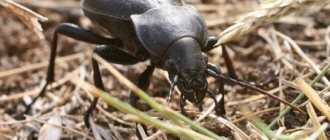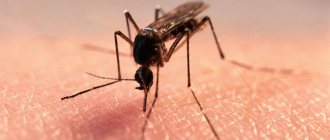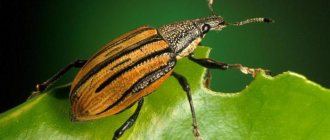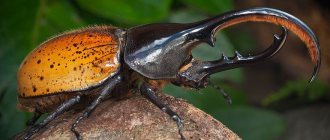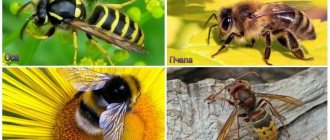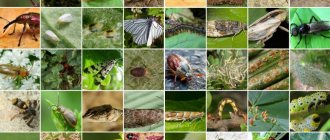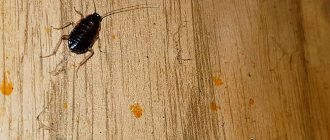Insects surround us everywhere. In human understanding, the life cycle of representatives of this class is negligible - it is weeks, months, rarely several years. But there are real long-livers.
It is quite difficult to say exactly how long a particular type of insect lives, since environmental conditions (temperature, humidity, access to food) significantly influence life expectancy. However, as a result of long-term observations and research, entomologists still managed to find out which insects can be classified as the longest-living.
The development of any insect is a successive change of several stages. A feature of some species is the delay on one of them, due to which life expectancy can increase several times. Vivid examples are borer beetles, mites, and cicadas. And ordinary domestic cockroaches have such a developed instinct for opportunism that if one generation manages to live in nourishing and chemically safe places, then the next generation will live longer, and so on.
Ticks
Like any other type of insect, mites go through 4 stages of maturation from egg to adult. But how long each period will last depends solely on external circumstances. Ticks are designed in such a way that in order to move to a new stage of maturation, they must eat a certain amount of food (suck on the blood of any warm-blooded animal). If the larva or nymph does not find a source of food, it does not move to the next stage of development and can linger on the previous one for up to 2 years. They are able to overwinter if the temperature does not drop below +5 °C. Having reached maturity, the female will die as soon as she lays eggs, the male will die after he has fertilized several females. Adults can also live for several years without food, and minor frosts are no longer a problem for them: they hibernate. Thus, ticks are quite capable of living up to 5-6 years.
The importance of beetles in nature and for humans
The large number of animal species provides a very broad role in the ecosystem.
- Many beetles and their larvae are involved in soil formation and wood processing. Some of them utilize weakened tree samples and speed up the decomposition process.
- The economic importance of individuals is great. Many are helpful in the fight against pests and weeds. Some even introduce them on purpose.
- Agricultural pests There are a lot of these representatives. They affect grasses, trees, fruit trees, conifers, leaves and buds. They often eat stems and fruits.
- People's neighbors . A number of species prefer to live in people's homes. They can feed on leather, paper, grocery supplies and dried fruits. Often affects wood.
- Human health . Many species secrete a defense mechanism in the form of geolymph. It can cause an abscess, burn or itching on the human body, and possibly cause distress. There were manifestations of allergies.
- Cultural parts . Some people often found beetles in their myths and symbols, and some were credited with magical properties. They were often seen in films and on classic paintings.
- Collecting . Private collections can number several thousand individuals. They select them by color or type, focusing on aesthetics. There are also scientific ones, including for cabinets of curiosities.
flies
The process of growing a fly takes 10 days (less in hot climates). An adult housefly lives on average 15-25 days, a fruit fly - about 10 days, a blowfly - one week. But there are many circumstances in which these indicators can differ significantly from the average. This species survives at temperatures from + 10 to + 40°C. The optimum is considered to be +20…+25°С. At higher or lower rates, the cycle duration is reduced. However, if with the onset of cold weather the fly manages to successfully hide, then it will hibernate, overwinter and wake up safely next spring, which extends its existence to 6 months. Flies living in an apartment can reach one year of age without any problems.
Does a mosquito die after biting a person?
Since male mosquitoes do not bite people, the fact of being bitten cannot in any way affect their existence. As for female mosquitoes, they can bite the victim repeatedly, this will not affect their health in any way.
Unlike, for example, a bee that stings a person, leaves the sting with part of its body in the skin and dies for this, a mosquito easily pierces the skin and easily removes the trunk, without injuring itself at all.
The only thing that can affect the lifespan of mosquitoes that attack humans is the speed and agility of the victim. A good reaction from a potential victim will help kill an insect that is about to start eating or is already sucking blood.
Fleas
Parasites, which, according to the vast majority of people, live in animal fur, live on average three months. This is under ideal external conditions. In fact, fleas do not live in animal fur. They use them exclusively for food, i.e. they jump on the wool, get to the skin, where blood vessels pass close, eat and return to their natural (favorable) living conditions - cracks, baseboards, carpets, etc.
At elevated temperatures, the life cycle of parasites accelerates and passes in 3 weeks; with a significant decrease, on the contrary, it slows down and extends.
But among this group of insects there are real long-livers. For example, Tien Shan fleas live up to 1 year (they have an impressive size - up to 7 mm), and fleas living in the northern regions live up to 1.5 years (they are able to hibernate and overwinter in a state of suspended animation).
Interesting Facts
Beetles are very different. Some of them are herbivores, others are predators, among them there are giants and tiny ones that can fly and move only on foot, there are also beetles that can live both on land and under water. Interesting facts about beetles will help you learn more about them.
- Beetles belong to the order Coleoptera; they are one of the many representatives of the insect class.
- They live in many places - in deserts and tundras, forests and mountains, in human food and animal burrows, in tree trunks and on flowers.
- Among them there are cleaners - orderlies. They decompose wood, animal carcasses and their dung.
- Man constantly fights with beetles that eat grain stocks in warehouses, berries and fruits in gardens, and vegetables in vegetable gardens. With the help of other beetles, man has learned to destroy these pests. Predatory and parasitic beetles often act as crop protectors.
- Sinanthropus is a group of animals that have adapted to life near humans. Among the beetles, these are species that eat wool carpets, museum collections, fur coats and antique furniture.
Video
Bees
A bee colony consists of a queen, workers and drones. Each species has a different lifespan. So, the uterus lives on average 3-5 years. Perhaps she could live longer, but at the age of 5 her egg-laying function begins to decline, and the bees find a new queen and simply stop feeding the old one (she dies within 2 days). Drones live for about 2-3 months. The age of a worker bee, according to entomologists, directly depends on the time of birth: if it was born in the spring, it will live about 40 days, if in the summer - about 30, but if a bee was born before winter, then it will be a long-liver and will live at least 200 days.
Nutrition
The Hercules beetle, despite its harsh appearance, is a herbivorous insect. Of all the things the beetle eats, tropical, rotten and fermented fruits can be distinguished.
The insects' mouthparts are underdeveloped, literally sucking out the sweet juice from the fruit until only the peel remains.
The search for the fetus is carried out using the antennae, the organ of smell and touch. Basically, beetles wander under trees in search of suitable food.
An insect can feed on one fruit for several days.
The Hercules beetle doesn't care about tree sap. Insects are carried by paws into cracks in the bark and attached to the trunk. Beetles can fly from tree to tree.
Cockroaches
This type of insect is distinguished by the highest adaptive qualities, which are inherited. Thus, the life expectancy of new generations is constantly increasing. The more favorable the living conditions, the longer the cockroach will live, and vice versa. Temperature and humidity are important conditions for the maturation of individuals. For example, at a temperature of +22 °C, the Prussian dog will reach sexual maturity in six months, and at +30 °C - in just two months.
From the moment of maturation, the red cockroach lives from 7 to 9 months, the black one - about 2 years. At the same time, there is a lot of evidence that cockroaches are increasingly living up to 4 years of age.
How long can they live without bleeding?
Male mosquitoes spend their entire lives without blood from humans or anyone else. Plant food is enough for them to live a normal life. Females need fresh blood or the proteins and nutrients it contains to reproduce.
A female mosquito can survive without blood and even lay eggs, but there will be few of them, not all eggs will hatch into larvae, and those that hatch will be weak and most likely will not survive. A female that lays eggs without drinking blood will die from exhaustion within 1–2 days after laying.
If the food source is close, female mosquitoes feed regularly, replenishing their energy reserves, lay eggs every 2-3 days and we can say that they live happily ever after.
Drunk mosquito with blood
Greenland shark, 300 years old
Like the bowhead whale, the bowhead shark leads a very measured lifestyle in the icy waters of the North Atlantic, has no natural enemies and, according to some data, can live to be 300 years old. It is noteworthy that puberty in this fish occurs at the age of about 150 years and even later.
♥ ON THE TOPIC: Animals and insects, or 30 reasons not to go to Australia.
Flamingo, 83 years old
The usual life expectancy for pink flamingos (Phoenicopterus roseus) is about 30-40 years, but in 2014, a bird named Greater died in one of the Australian zoos, which by that time was 83 years old. Thus, the flamingo doubled the age considered by scientists to be the maximum for this species.
♥ ON TOPIC: What will happen to planet Earth if the Moon is destroyed.
Elephant turtle, 250 years old
The Galapagos tortoise, also known as the elephant tortoise, is the largest tortoise that has survived to this day. However, this might not have happened, since in the 19th century European sailors used these reptiles as food supplies for long voyages, thus destroying about 200,000 individuals. In captivity, the Galapagos (elephant) tortoise lives for about 170 years, but there are cases where the age of individual individuals was more than a quarter of a century.
♥ ON THE TOPIC: Dolphins are not fish and other interesting facts about these cetaceans.
Law of communication: find out - tell me
In recent decades, scientists have had access to methods that allow them to rigorously study the behavior of individual ants in their daily lives, both inside and outside the anthill. And the results of such studies were completely unexpected. It turned out, for example, that ants are not only capable of learning (it is well known that, having discovered a sufficiently rich source of food, for example, a piece of sugar, ants come to it again and again) - they can even operate with abstract ideas. For example, they can be trained to always choose a particular feeder—say, one marked with a triangle rather than some other geometric shape, no matter what size, color, or even shape that triangle is.
Carpenter ant trapped in a Sarracenia flower (insectivorous plant, USA)
However, what is even more surprising is the ability of ants to remember rather complex routes leading to food or other objects that are important to them. And research by Novosibirsk scientists led by Zhanna Reznikova shows that the communication system allows ants to transmit this information to each other. In other words, a scout ant can not only personally lead fellow insects to a food source or mark the path to it with odorous marks, but also “explain” to other insects how to get to the right place on their own. This requires a more developed system of signs than the famous bee language: after all, if a bee flying in a straight line only needs to know the direction and distance, then a creature moving along ground paths needs to imagine the entire route, the entire sequence of turns and forks.
How pests reproduce and their life cycle
Often, the eggs of the Colorado potato beetle, bright and oblong, can be found on the reverse side of the leaf blades of various nightshade crops.
This is due to the fact that, due to the high degree of adaptability, the pest can feed on plants of these varieties; potatoes and tomatoes, sweet peppers and eggplants are most affected.
Experts say that the greatest damage to crops is caused not by the beetles themselves, but by their voracious larvae that appear in the summer.
The beetle spends the entire winter period in the ground, which makes it possible to infect young potato shoots and damage green spaces during their growth and development and preparation for setting tubers.
Chimpanzee, 75 years old
The closest relative, according to modern ideas, of Homo sapiens, whose genome differs from ours by only 6.4%. However, the primate is not able to reach the maximum human age level - the maximum life expectancy of chimpanzees is considered to be 75 years (the average life expectancy is about 40 years).
♥ ON TOPIC: Old child: “progeria” is a disease that leads to premature aging.
How to deal with the cockchafer
It is recommended to apply medications against the cockchafer early in the morning or in the evening. Do not process in direct sunlight. In dry weather, with insufficient soil moisture, after treatment the soil is watered abundantly.
Popular protection against cockchafers using folk methods:
- mechanical digging of soil using a shovel bayonet;
- sodding (planting green manure);
- treatment with infusion of onion and garlic;
- sowing lupine.
Advice! For prevention, plant garlic in the habitats of beetles and their offspring. The smell repels insects.
A remedy with ammonia tested in the garden helps a lot. Add 100 g of table salt and 2 tablespoons of alcohol to a bucket of water. They water the soil during the flowering period of potatoes and for preventive purposes.
On strawberries and raspberries, for preventative purposes in the spring, a solution of water and ammonia (10 liters of water and 20 ml of ammonia) is spilled between the rows. Treatment with insecticides and traditional methods are also effective: infusions of onion peels are thoroughly poured onto each bush.
Advice! Traps are prepared for adult beetles. Containers with kerosene are placed in a well-lit area at night.
To reduce the population of insects, trees and bushes are manually shaken off in the evening and burned. Khrushchi are afraid of the smell of elderberries and flowering cruciferous vegetables: turnips, turnips. By planting the area with these plants, you can be sure that pests will not fly into this area.
How to get rid of cockchafer larvae
The fight against cockchafer larvae involves an integrated approach. From autumn and throughout the growing season, it is necessary to carefully dig and deeply loosen the soil. Eggs, larvae and cocoons, subjected to regular mechanical stress, are injured and die.
You can get rid of larvae with a guarantee using chemicals. There are many remedies for cockchafer larvae. Among the most popular insecticides are Bazudin, Zemlin, Aktara. The biological agent Nemabakt guarantees the destruction of larvae in the ground within a few days without harm to health and plantings. A popular effective remedy offered by the industry, Antikhrushch is characterized as an effective way to fight in a short time.
Sow the affected areas with lupine. Weeds do not grow in such an area. The larvae in the ground, forced to feed on lupine roots, die. The soil is treated with chlorine solution: 0.5 l. add 100 g of chlorine to water. Water as carefully as possible, between rows, so as not to damage the roots of the plants.
Ammonia for larvae is effective when used regularly. Places where traces of damage are noticed are generously shed with ammonia solution. The procedure is carried out with the onset of warm weather and just before the onset of frost, trying to avoid getting the composition on the plants.
It is effective to use iodine (add 10-15 drops of iodine to 10 liters of water), pour the affected areas with this solution throughout the summer. After watering, the soil must be deeply loosened. In the spring, make deep, up to 40-50 cm, furrows in the beds and water them with a solution of Karbofos or Decis. The larvae die within a few days.
Advice! The use of preparations containing chlorine for soil treatment is effective. This is how the familiar Whiteness is used in practice.
You can fight without using aggressive chemicals, using folk remedies. For this purpose, garlic and onion peels are traditionally used for infusion. A concentrated solution is prepared in a bucket and kept for 3-5 days. Dilute with water 1:1 and add 1 liter. under each bush.
You can remove cockchafer larvae by burying rotten fish or herring in the ground, not far from the affected areas.
An effective method has been tested in practice: manure traps. In the fall, deep holes, up to 1 m deep, are dug in the garden and filled with fresh manure. The larvae will definitely choose this cozy place for wintering. All that remains is to dig everything up in the spring and destroy it.
If gardeners do not want to poison pests with chemicals, they are collected manually by digging. This method does not guarantee results.
It is not recommended to leave old stumps and thickets of herbaceous plants at the dacha. By uprooting them, you can find entire colonies of larvae. Among the effective preparations, Prestige is noted; it is used to treat the roots of seedlings and potato tubers before planting.
To combat larvae, ammonia is used in the soil under raspberries and roses: 10 ml per 10 liters of water. The soil is watered abundantly twice during the spring-summer period.
You can process strawberries, a special treat for the larvae, in any suitable way. If folk remedies do not help, it is worth transplanting it to another area, having previously treated the soil and making sure that there are no pests there. Dig up the previous place and sprinkle with bleach.
In areas where pest colonies have been observed, the soil is cultivated especially carefully. If it is possible not to sow the area next year, it is better to carry out complex treatment for preventive purposes.
Kinds
The described insects belong to the family of stag beetles. Its representatives are coleopterous beetles, which have mouth mandibles protruding far forward and equipped with teeth.
The family of stag beetles includes a whole genus of stag beetles that live in Europe (about two dozen of them are found in Russia alone) and North America, but most species were concentrated in the eastern and southern regions of the Asian continent. Let us describe some types of these horned creatures.
1. European stag beetle . Its range extends widely across the continent, spreading from Sweden in the north through the entire European territory to the south, all the way to Africa. And to the east it extends to the Urals. In this part of the world, this horned titan is the champion in size, which in males reaches up to 10 cm.
2. The giant stag beetle , being an inhabitant of North America, even exceeds its European counterpart in size, although only by a couple of centimeters. In other respects, it is similar to him, only the brown body color is somewhat lighter in tone. But, like most representatives of this genus, the females of such beetles are much smaller than their gentlemen and rarely grow more than 7 cm.
3. Wingless staghorn , settled in the Hawaiian archipelago, in particular on the island of Kauai, has many differences from the previous two species. Compared to them, his chewing was quite small. These are neat formations curved towards the center. They rather resemble cow horns rather than deer horns. These creatures are black in color. Their elytra are fused, which means they are not able to straighten them and fly. Moreover, the lower wings, although present, are too poorly developed.
4. North African stag . Compared to the European and American giants described above, it is small, but individual specimens of such insects are very beautiful, and therefore in demand among collectors. The so-called horns are not at all a prominent part of such beetles. But the color schemes of various parts of the body, creating unexpected contrasts, harmonize pleasantly.
5. The rainbow stag beetle is also surprisingly beautiful with its multi-colored tints. There are specimens of copper-red, sunny yellow, green and blue colors. And therefore, such pets are bred by nature lovers at home. The horns of these creatures are curved upward at the ends. Their homeland is Australia. The beetles usually do not exceed 4 cm in size, and there are also very small specimens, especially among the female half.
6. The Chinese stag has jaws in the form of two crescents looking at each other. The color of the beetle is black and shiny. Its head and chest are muscular, well developed and wider than the abdomen, ovally rounded at the end. This species has two subspecies, the difference of which lies in the degree of development of the mandibles.
7. The titanium beetle lives in the tropics and reaches a length of more than 10 cm. It is distinguished by a large head, comparable in size to the rest of the body. Its horns look like the ends of pliers.
8. Dybovsky's stag in our country lives in the Far East, and is also found in China and Korea. This beetle is not particularly impressive in size; on average, the length of males is about 5 cm. Its horns are figured and large. The most common color of the elytra is dark brown; yellowish hairs cover the body on top. The female half is painted in darker tones, up to charcoal black.
9. Grant's stag comes from South America. He is a very large representative of the stag family. Its mandibles resemble ring-shaped downward curved tusks covered with small teeth. They are so long that they are larger in size than the body of the insect itself. The front part of the beetle has a golden-green color with iridescence, and brown elytra are visible behind them.
Elephant, 86 years old
An Asian (aka Indian) elephant can easily live for about 60-70 years, especially considering that an adult does not have natural enemies in its habitat (except for homo sapiens, of course). In captivity, elephants live even longer; the record is 86 years, which an elephant lived in one of the Chinese zoos. This makes the Asian elephant the longest living land mammal (again, excluding humans).
♥ ON THE TOPIC: Ventriloquists (ventrologists), or how to speak and sing without opening your mouth (video).
The benefits and harms of ladybug
The boundless gluttony of this predatory beetle brings great benefits to homesteads and agricultural crops, because it eats aphids that harm the crop. While in the larval stage, the coccinellid consumes up to 50 prey per day. An adult insect eats up to 100 aphids. They help plants by clearing crops of pests. Therefore, they are even bred at specialized enterprises, and then distributed over the fields with the help of aviation.
But harm can be caused by herbivorous species of these beetles; their habitats are in Asia. There they cause significant damage to crops. In our area, some harm vegetables: potatoes, sugar beets, tomatoes and cucumbers.
Blue whale, 150 years old
For a long time, the bowhead whale was considered the oldest vertebrate after several individuals were discovered that were over 100 years old. In addition, scientists have been observing the male for a long time, who supposedly lived for more than a century and a half.
However, the figures are based on calculations of changes in the racemization of aspartic acid in the lens of an animal’s eye; without going into details, it should only be noted that the method does not claim any accuracy and is disputed by many scientists. The average lifespan of whales ranges from 35 to 90 years, depending on the species, but cases of natural death for this species are recorded extremely rarely.
♥ ON THE TOPIC: Cosmic speeds: how fast do you need to fly to leave the Earth, planetary system and galaxy?


